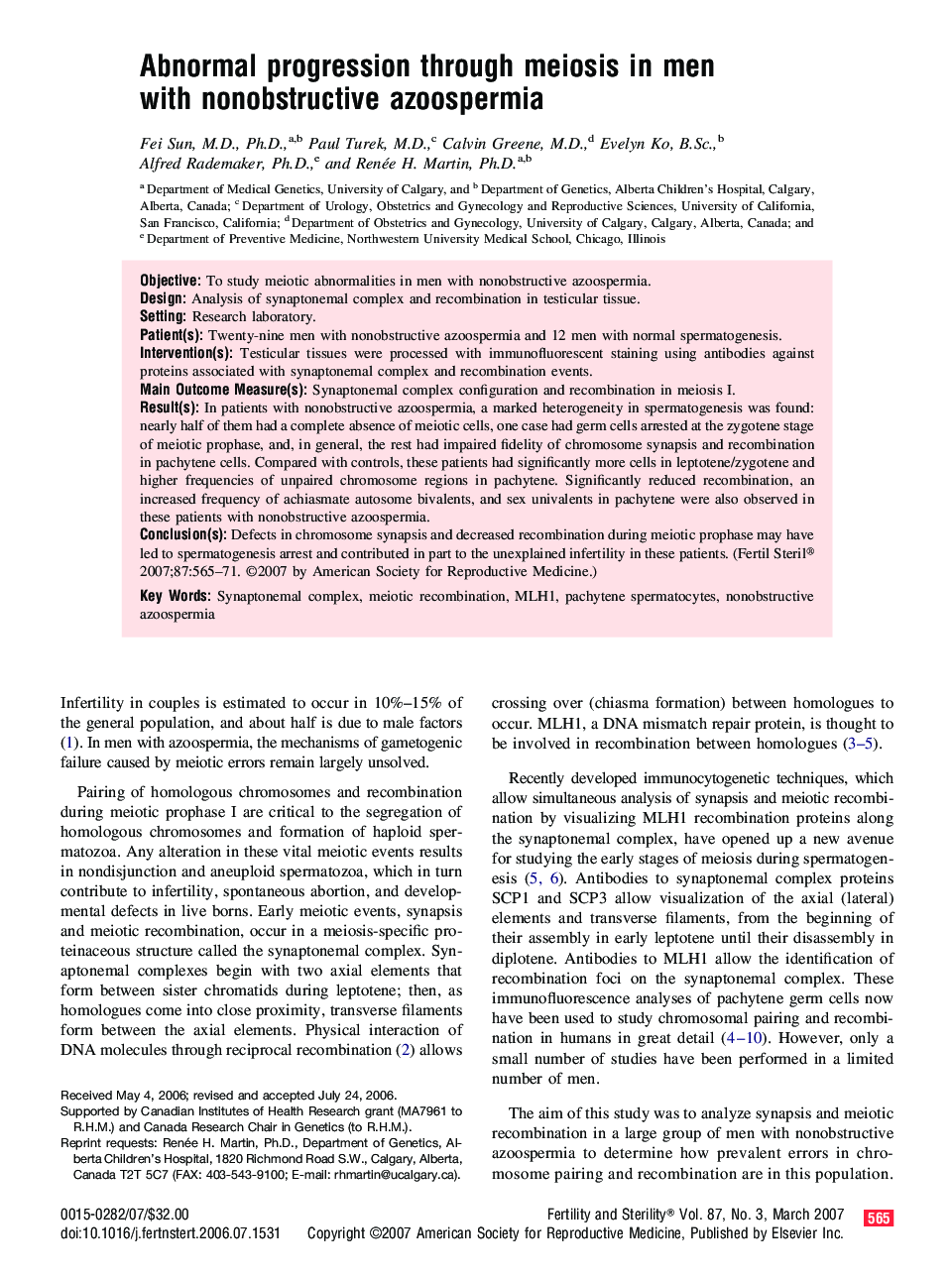| Article ID | Journal | Published Year | Pages | File Type |
|---|---|---|---|---|
| 3940145 | Fertility and Sterility | 2007 | 7 Pages |
ObjectiveTo study meiotic abnormalities in men with nonobstructive azoospermia.DesignAnalysis of synaptonemal complex and recombination in testicular tissue.SettingResearch laboratory.Patient(s)Twenty-nine men with nonobstructive azoospermia and 12 men with normal spermatogenesis.Intervention(s)Testicular tissues were processed with immunofluorescent staining using antibodies against proteins associated with synaptonemal complex and recombination events.Main Outcome Measure(s)Synaptonemal complex configuration and recombination in meiosis I.Result(s)In patients with nonobstructive azoospermia, a marked heterogeneity in spermatogenesis was found: nearly half of them had a complete absence of meiotic cells, one case had germ cells arrested at the zygotene stage of meiotic prophase, and, in general, the rest had impaired fidelity of chromosome synapsis and recombination in pachytene cells. Compared with controls, these patients had significantly more cells in leptotene/zygotene and higher frequencies of unpaired chromosome regions in pachytene. Significantly reduced recombination, an increased frequency of achiasmate autosome bivalents, and sex univalents in pachytene were also observed in these patients with nonobstructive azoospermia.Conclusion(s)Defects in chromosome synapsis and decreased recombination during meiotic prophase may have led to spermatogenesis arrest and contributed in part to the unexplained infertility in these patients.
